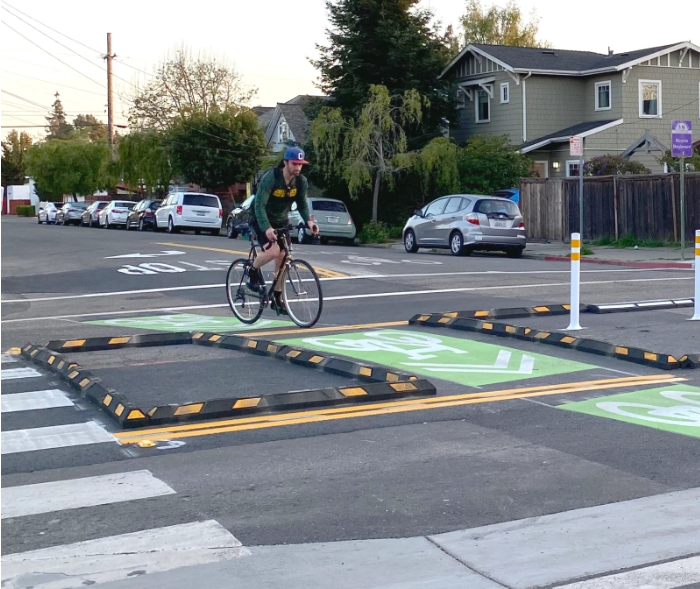Note: GJEL Accident Attorneys regularly sponsors coverage on Streetsblog San Francisco and Streetsblog California. Unless noted in the story, GJEL Accident Attorneys is not consulted for the content or editorial direction of the sponsored content.
Note: this post has been updated with the Cycle 6 deadline.
At this week's meeting of the California Transportation Commission (CTC), staff gave an update on the current status of the Active Transportation Program, and the CTC adopted new guidelines for the next cycle of funding.
With that, the application period for Cycle 6 is officially open. The updated guidelines and scoring rubrics will be available soon at the ATP website; the deadline for applications is June 15.
Staff estimate that there will be about $651 million available for Cycle 6 - which covers four years beginning in 2023 - from all sources, including S.B. 1 and the Federal Transportation Alternatives Program. The funding will be distributed in three categories, with half going to a statewide competition, ten percent to small urban and rural areas, and forty percent to the larger metropolitan areas.
CTC Executive Director Mitch Weiss said staff are still hoping that the legislature will include the extra $2 billion the CTC requested for the ATP in the final state budget. Budget negotiations will continue through the spring and into June.
That bonus funding would be used to clear a large backlog of good projects that applied to the ATP in the last cycle but lost out because the available money didn't reach very far.
Laurie Waters, who helms the ATP for the CTC, mentioned that over the past year or so, staff were able to conduct virtual site visits with potential applicants. In the past, they have made an effort to visit potential project sites to help applicants strengthen them as well as improve their chances of competing for the limited funds. Being able to conduct those "visits" online has "made it possible for staff to see many, many more potential projects, and provide much more guidance," she told the commission - about 129 potential projects.
"We were truly impressed by what we saw on these site visits," said Waters. "Most of the projects being planned are part of active transportation networks with low-stress complete streets features. If the site visits are any indication of the applications that will be submitted in this round, the program's trend towards larger, transformative network projects will continue," she added.
However, that also means that smaller, but meaningful, projects "will again go unfunded."
Although CTC staff conducted nine public workshops on program guidelines over the past year, only minor changes were made to the existing document.
The biggest change was adding a requirement suggested by Commissioner Joseph Lyou: Any project proposed within 500 feet of a freeway or high-traffic roadway must describe any mitigations taken to minimize exposure to air pollution and explain why that location is unavoidable. This would not be part of the scoring criteria, but is meant to bring attention to the importance of locating active transportation facilities away from pollution sources for the health of their users.
A representative of the city of Santa Barbara called in to thank staff for keeping guideline changes to a minimum. That will make it easier for projects that have already applied - but missed out because funding came up short - to apply again without having to make major adjustments to their applications.
The ATP guidelines have gone through multiple rounds of adjustments throughout the life of the program, and already incorporate requirements related to a wider variety of issues - such as equity and community outreach - than is required of other transportation funding programs. Jonathan Matz of Safe Routes to Schools National Partnership called in to commend the staff for their work on the guidelines, and reminded commissioners that the ATP "sets the benchmark for all other programs in the state in terms of soliciting broad stakeholders. Staff has had to navigate tricky issues and deal with detailed questions - it's not easy," he said.
"The only real structural challenge," he said, "is not having enough money in the program."






